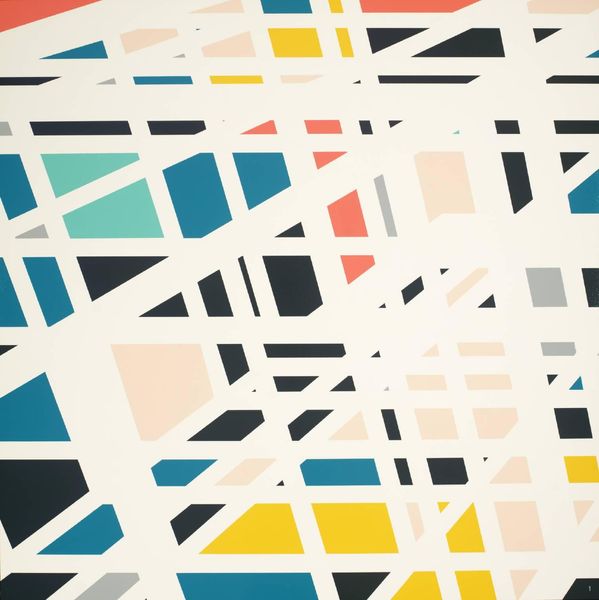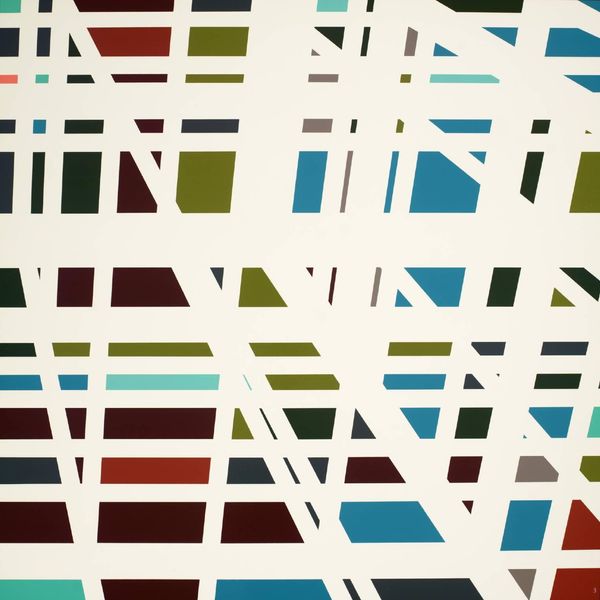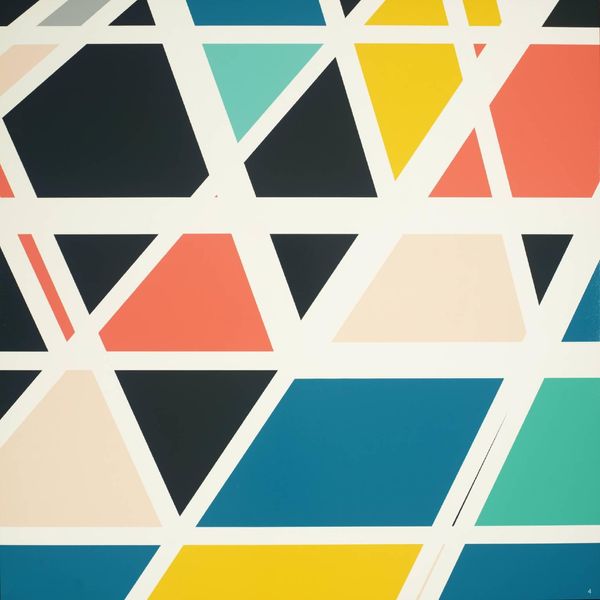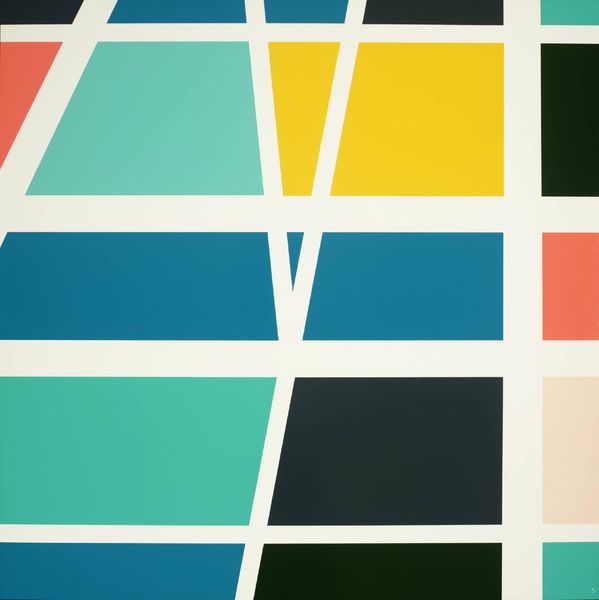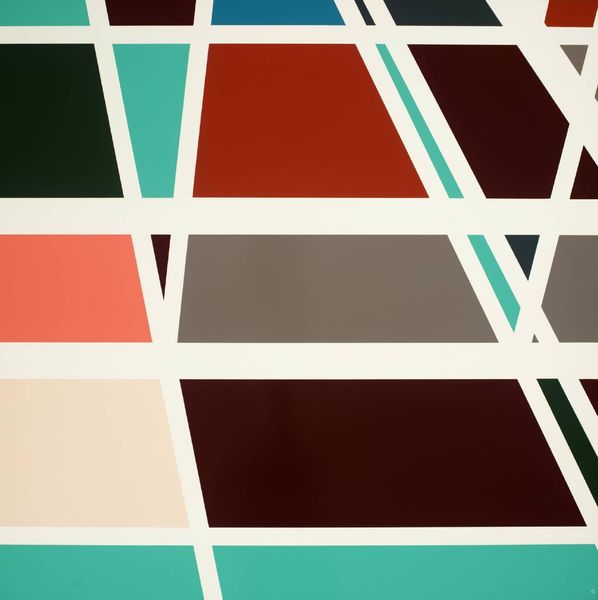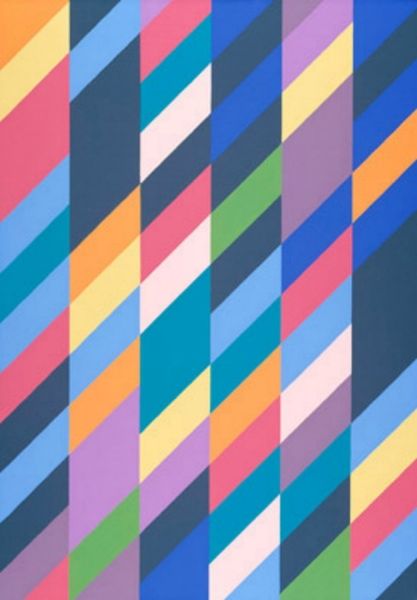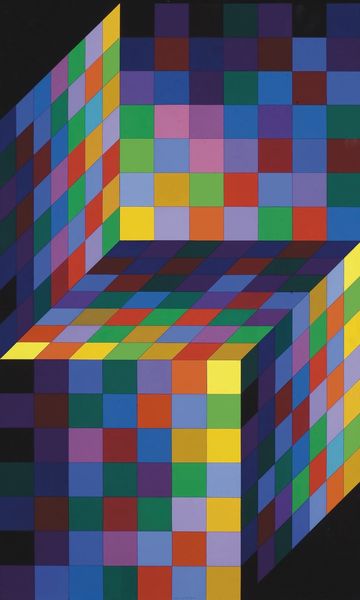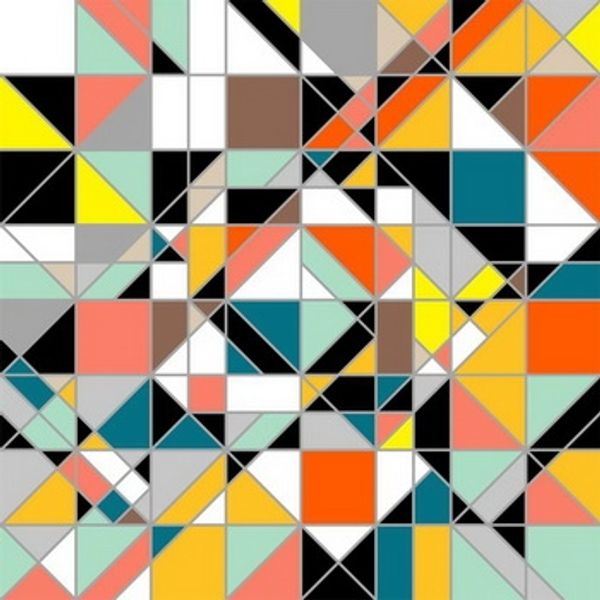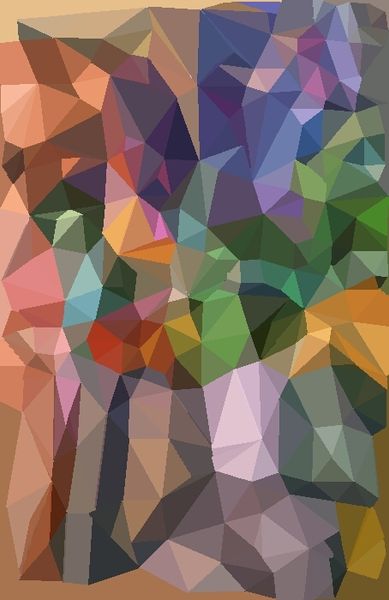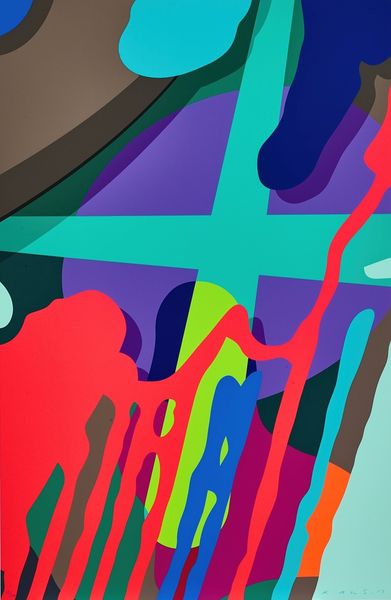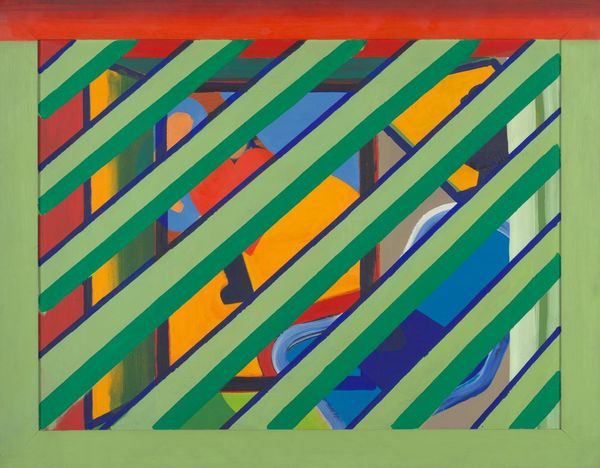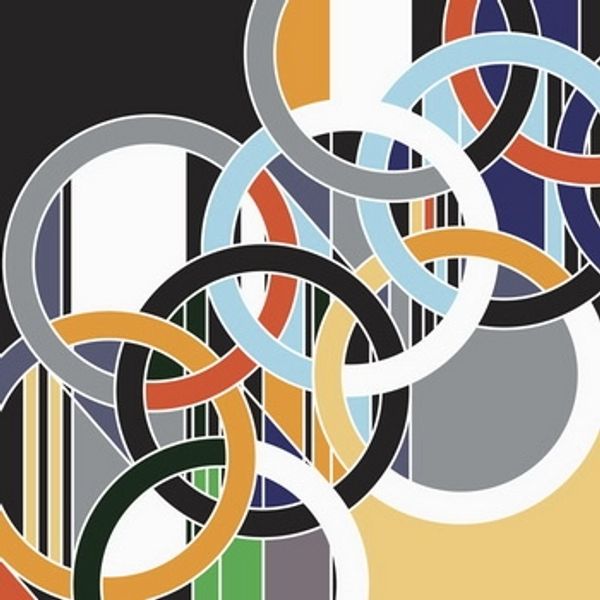![[no title] by Sarah Morris](/_next/image?url=https%3A%2F%2Fd2w8kbdekdi1gv.cloudfront.net%2FeyJidWNrZXQiOiAiYXJ0ZXJhLWltYWdlcy1idWNrZXQiLCAia2V5IjogImFydHdvcmtzLzFmNTk5NGI3LTZkZjMtNDA2ZC05N2ZmLTg0ODg2YzlkMGI3My8xZjU5OTRiNy02ZGYzLTQwNmQtOTdmZi04NDg4NmM5ZDBiNzNfZnVsbC5qcGciLCAiZWRpdHMiOiB7InJlc2l6ZSI6IHsid2lkdGgiOiAxOTIwLCAiaGVpZ2h0IjogMTkyMCwgImZpdCI6ICJpbnNpZGUifX19&w=3840&q=75)
Dimensions: image: 737 x 737 mm
Copyright: © Sarah Morris | CC-BY-NC-ND 4.0 DEED, Photo: Tate
Editor: This untitled piece by Sarah Morris, created with household gloss on canvas, feels like a deconstructed cityscape. The geometric shapes and lines almost mimic skyscrapers, but it's also chaotic. How would you interpret this work? Curator: You know, it reminds me of musical counterpoint, where independent melodies weave together, creating harmony and dissonance. Morris seems to be playing with a similar tension – these rigid geometries fighting against the looseness of the grid. Does it evoke a particular place for you? Editor: Not really a specific place, but definitely the feeling of being in a bustling urban environment. Curator: Exactly! It’s like capturing the fragmented experience of modern life. It's less about representing a physical space and more about conveying a sensory experience. Editor: I hadn't considered it that way. It's interesting how abstract art can still evoke such strong feelings. Curator: Absolutely. It's the power of suggestion, inviting us to find our own meanings within the lines and colors.
Comments
Join the conversation
Join millions of artists and users on Artera today and experience the ultimate creative platform.
tate 8 months ago
⋮
Dulles (Capital) is Morris’s first major print work. The portfolio comprises nine square prints containing abstract geometric grids. Blocks of bright greens, turquoise, yellow, browns, orange and greys are separated by white lines which appear recede into the distance at an extreme perspective. All nine prints may be displayed together, each print separated by 3.5cm of white wall, which becomes part of the work. They form a large square, depicting another, larger grid that echoes the structures within the individual prints. Displayed in this way they provide an off-centre variation of Morris’s painting Constitution Gardens 2000, (private collection). Each print is numbered in the lower right corner to designate its position within the overall grid. The bottom row (Tate P78602-P78604) is made up of large blocks of colour which become more broken up in the middle row (Tate P78599-P78601). By the top row (Tate P78596-P78598) the dense three-dimensional structure has become an intricate array of fragmented blocks and splinters of colour. Alternatively, the prints may be displayed individually or in smaller groups based on their positions within the full scheme.
